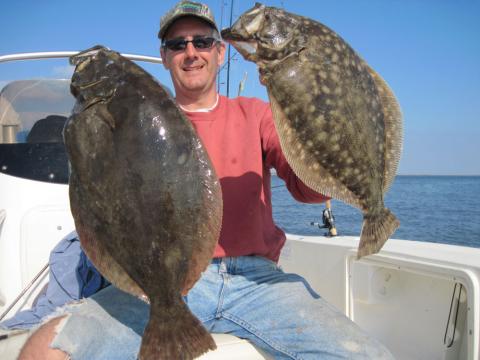Brad Mormann | Originally published in GameKeepers: Farming for Wildlife Magazine. To subscribe, click here.
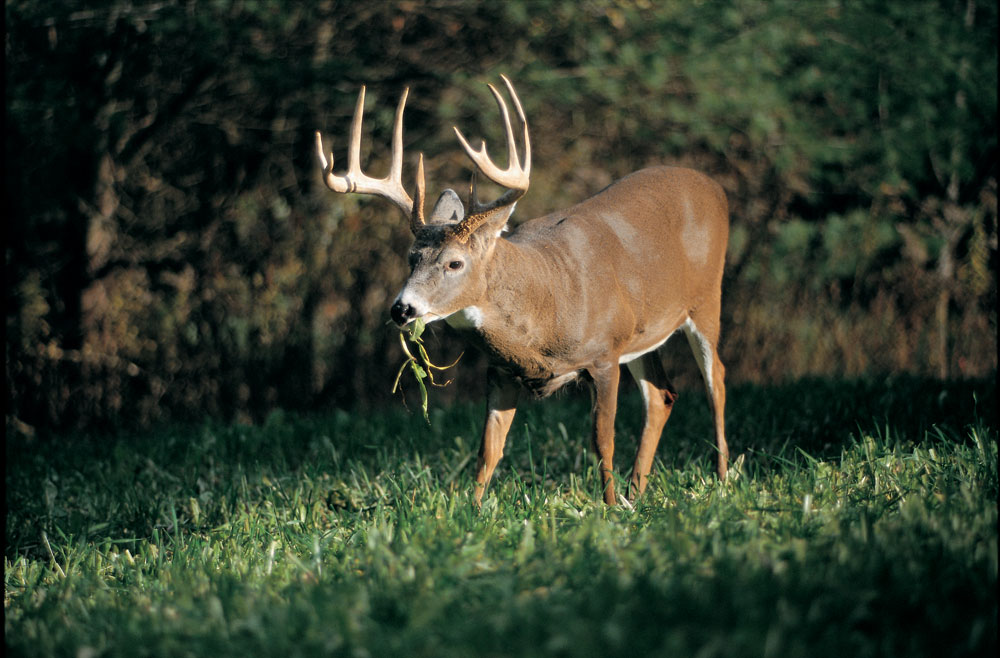
Harvest plots are my favorite type of food plot to design and implement. This is because they can test your skill, in more than just your ability to grow the plots, but to strategically think about how you and the deer will utilize them…and let’s face it; it has to do with “hunting.” In many ways they can be as strategic as the placement of your hunting stands and actually have many of the same goals. The primary goal in developing a harvest plot is to “attract deer to within your effective harvest distance during daylight hours for the weapon you choose to utilize.”
Harvest Plot Location
You will often hear that there are three basic items to consider when planning for these plots: size, shape and location. However, if considering their importance level there actually should be five items to consider: location, location, location, size and shape. Think about it, it’s somewhat like a neighborhood sweet corn stand. Those folks selling the corn don’t normally sell it at the end of a dirt road far from the nearest highway. No, they put their stand right at or near a busy intersection because it is easy for people to see and access, dramatically improving their sales. Harvest plots are no different. Why locate the plot far from a mature buck’s beaten path just because. Think strategically. Today’s average deer hunter knows more about their quarry than ever before. Use that to your advantage. Become a researcher, a “student of the animal.” Better known as a “precise observer.” Learn how deer are using your property in order to determine the most effective locations to place your harvest plots. Trail cameras are excellent research tools that are continually giving away a deer herd’s secrets, especially if you become that “precise observer.” Which camera locations is a particular mature buck utilizing, which direction is he walking during different times of the day? If the buck is moving through the area during daylight hours or early in the evening, the location is probably in close proximity to his bedding area – great, “fire up the tractor.” If it appears he is consistently moving through the area late in the night or early in the morning before sun-up, it may be necessary to back track him some. This may mean studying a map or doing some on-the-ground scouting to locate the plot a little closer to his potential bedroom.
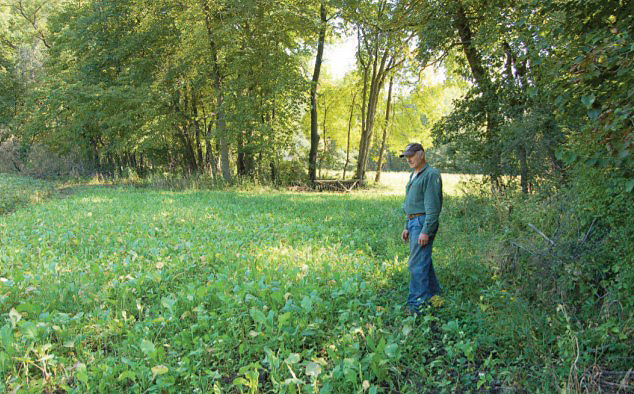
A season or two of watching deer movements around a property can also help with the strategic narrowing down of potential harvest plot locations. This may be from the cab of your truck driving through the property or deer observed from the stand. We have all had close encounters were a buck veered from the trail our stand was on just out of range for a good shot. What could have made the difference? A lush clover plot or better yet an estrous doe feeding in the lush clover plot! The important thing is that you are working to change that situation for the next encounter which will hopefully end in different results. Lastly don’t hesitate to get out there and have a look around. Keeping the disturbance low is important (most of the time), but it is better to cause a little extra disturbance when setting up a harvest plot now than regretting where you placed your plot later. No matter the time of year there will be sign available to find. It may be beds in the snow or tall native grass, scars on trees from several years of rubbing, to those bright rubs that stand out like blinking lights in the shaded woodland, or simply a broken branch where a buck made last season’s scrape.
A special aspect to remember is that mature bucks, on average, create more rubbing and scraping sign than immature bucks. If you can locate areas of extraordinary sign like this on your property you are on the right track. The next step is to determine if the area is “huntable.” Walking into and finding a mature buck’s “living room” is great, but if you can’t access the area without alerting him of your presence, or keep hidden from his amazing senses while you are in your stand, you are wasting your time.
Scent is the primary factor. Does the wind move through the area in a consistent direction or does it swirl? You can’t know which way the wind will blow all the time. I can’t tell you how many times I have been in a stand and felt the wind swirl and hit me on the back of the neck. It literally makes me freeze, not from being cold, but from fear - in an attempt to keep from giving off anymore scent than absolutely necessary. Then I wait, hoping to not hear a snort or crack of branches, or see the “whites of any tails” from a deer bounding away. Every property and situation is different in determining if it has consistent wind, but it is an important factor to consider.
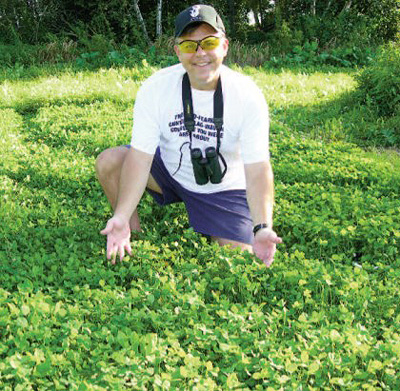
what you plant. You’ll want your choice to be at its peak of
attraction when you plan to hunt the spot. This perennial plot in
Minnesota will only produce through the first half of the season.
With small plots it’s difficult to plant the variety necessary to keep
them coming back all season long.
Minimizing disturbance from scent, sight and sound is also important when entering and exiting stands near a harvest plot. In some cases it can get quite tricky as you traverse up, over and around multiple terrain features. Can you get in and out undetected whether it is sunny and calm, windy, raining, snowing? Let’s be realistic there may be times when you just can’t hunt a harvest plot because the path there is too noisy or the wind would blow your scent in the wrong direction. The deer herd’s own trails near the potential harvest plot may also cause you to reconsider the location or at least develop an adaptive plan to work around them. The reason for an adaptive plan to avoid walking down or across active deer trails is too keep your scent out of the picture. Inevitably, and unfortunately, every year I have the unfortunate opportunity to observe deer finding my scent trail in the vary place I walked a couple of hours earlier. Now, I definitely pride myself on keeping my scent to a minimum by wearing knee-high rubber boots, camouflage washed and protected from human scent from scent free clothing detergent, not to mention applying copious amounts of scent-reducing spray. However these tactics can and will eventually fail if tested enough times by the mind-blowing power of a deer’s sense of smell.
For me, the deer’s nose that usually “finds me out” is attached to a mature doe. They seem to be more cautious than even some mature bucks and take every smell seriously. I call them “Pinocchio does” because their nose is extremely long and unless distracted, they’re challenging to beat on a consistent basis. This is where avoidance is essential and can be built into the harvest plot’s design. Keeping odors to an absolute minimum is crucial so you don’t burn out a stand site too quickly. Wash your clothing in a hunter’s detergent, store your gear in protective containers and don’t put them on until you get to where you will hunt, also treat your clothing with a quality scent-eliminating spray. If the heavily used deer trail is in your way, or you have a trail that passes you downwind…move it. This can be done during harvest plot construction by stacking trees and branches in the trail’s path to divert their movement to a location where your scent will not be found. In addition, creating a “path of least resistance” for them where you want them to travel and this almost always will work for you.
Lastly, always keep your eyes peeled for additional harvest plot locations. A harvest plot is an effective tool in “closing the distance” on mature bucks, but as mentioned earlier, needs to be thought of similarly to a stand site or maybe a better term is “ambush location.” Hunt it sparsely and wisely - meaning, don’t develop a single plot planning to hunt over it every day of a 3 month season. Develop multiple harvest plots and possibly multiple ambush sites on each plot, to provide several options given varying wind and thermal directions and conditions so you can dissipate hunting pressure.
As I age, I often think back to my first few bow hunting seasons. I had saved up everything I could to buy a bow and a treestand. I followed my uncle’s advice on what tree to put the stand in and then put my time in… day after day after day… for the first two weeks of the bow season. For Iowa that was October 1st through the 15th. Not only did I burn myself out, I witnessed a continual decrease in the number and quality of deer well before the potential for the woods to come alive during the rut. I ruined the site, at least for the time being. By the 15th I was no longer seeing multiple mature does passing by, but the occasional yearling buck or fawns with the faint outlines of their spots. My stand was beyond burned out, it was torched. It’s funny to reflect back on those early days but at the time it was extremely frustrating.
Harvest Plot Size and Shape
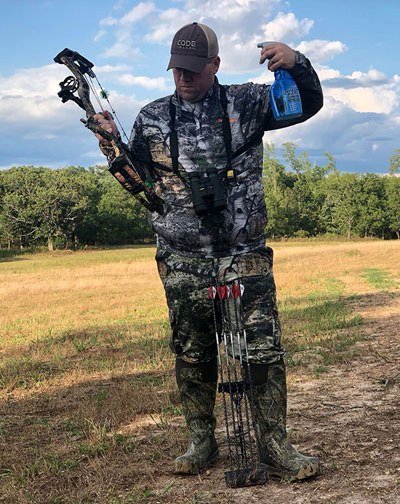
burn out a stand site too quickly. Wash your clothing in a hunter’s
detergent, store your gear in protective containers and don’t put
them on until you get to where you will hunt, also treat your
clothing with a quality scent-eliminating spray.
In general, a harvest plot’s size is smaller than that of a feeding plot simply because the goals are different. Feeding plots are meant to produce a large amount of quality forage and often contain plants that require larger acreage to grow well, such as corn and soybeans. Harvest plots need to grow quality forage, but the main goal is attraction. In addition, when considering bowhunting, shot distances are relatively short and thus the plot’s width must be narrow enough in all, or portions of it, to provide effective harvest opportunities. Narrow plots can be effectively constructed in pine plantings. Scheduled third and fifth row thinning of pine plantings are great opportunities to plant quality harvest plots. They can be fairly long and still funnel deer by within effective range.
Old fields, CRP, and native grass stands act as nearly clean slates for all sorts of shapes and sizes. For ground blind hunting in grass fields it’s hard to beat a “V”-shaped harvest plot with the stand tucked into the base of the V. A few quality plots mixed in with lots of cover translates into concentrated forage opportunities and deer utilization. Just as with the others, a hardwood lot harvest plot can be made to fit the equipment and resources you have available. The cheapest and sometimes most effective can literally be made with a loppers and a hand rake. They are built in places where large trees have fallen and possibly even wiped out several others as they fell. Finding them is as easy as walking through the woods in the summer and looking for bright spots where sunlight is penetrating to the woodland floor. Depending on how long ago the large tree has fallen, there may be a lot of light and only a small amount of raking, burn-down herbicide to apply or a miniature prescribed fire needed before adding the required seed and fertilizer. In other cases the large break in the canopy will produce a lush growth of shrubs, maybe grass and small trees, all of which can be clipped off and drug out of the way. Larger plots in woodlands require more resources to remove trees and prep the soil. Tried and true shapes often revolve around the kidney bean or hourglass.
Either shape or similar configuration has the goal of providing shot opportunities across the plot or to funnel the deer close by. Making the plot as wide as you can effectively hunt is beneficial to improve the growth of certain forages. This will allow for more hours of direct sunlight because the tall wide canopied trees in our eastern woodlands can cast a large shadow. Harvest plots are a proven effective tool in improving hunting success. They can fit into nearly anyone’s budget and can be fun to develop and design. By collecting and utilizing your property’s specific deer movement data; considering scent, sound and visual disturbance; and making the size and shape of the plot fit your hunting style; you will have the confidence to put the time and resources into your own harvest plots.

















